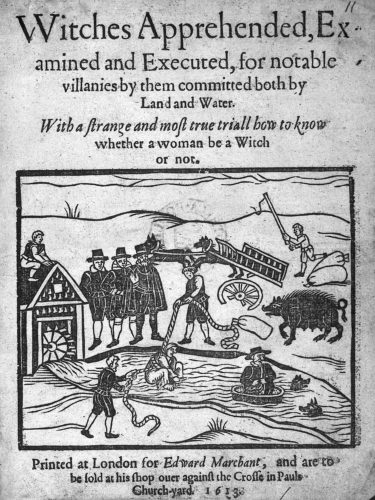In the sixteenth and seventeenth centuries, a significant portion of women involved with the law were those accused of witchcraft. ‘Swimming’ witches to find out the truth was one of the residual forms of trial by ordeal, used in the seventeenth century. It was a ritual event which turned any pond-side or river-side green into a virtual court-room. The accused was lowered into water – tied with a rope around the waist - to see if she swam or sunk. Drowning would prove her innocence, but if she floated she would be deemed guilty and put to trial (and publicly hanged if sentenced). When bodily marks failed to offer clear proof of witchcraft, trial by water was supposed to provide conclusive knowledge. This image is meant to depict the historical swimming of Mary Sutton for witchcraft in 1612 (leading to her execution). Mary was a hog-tender accused of bewitching horses, cattle and people through her hogs, hence the two hogs in the stream and the giant hog on land, unwitting agents of her supposed evil, and emblematic of her social role in the village.
© 2019 University of Cambridge and Fitzwilliam Museum











